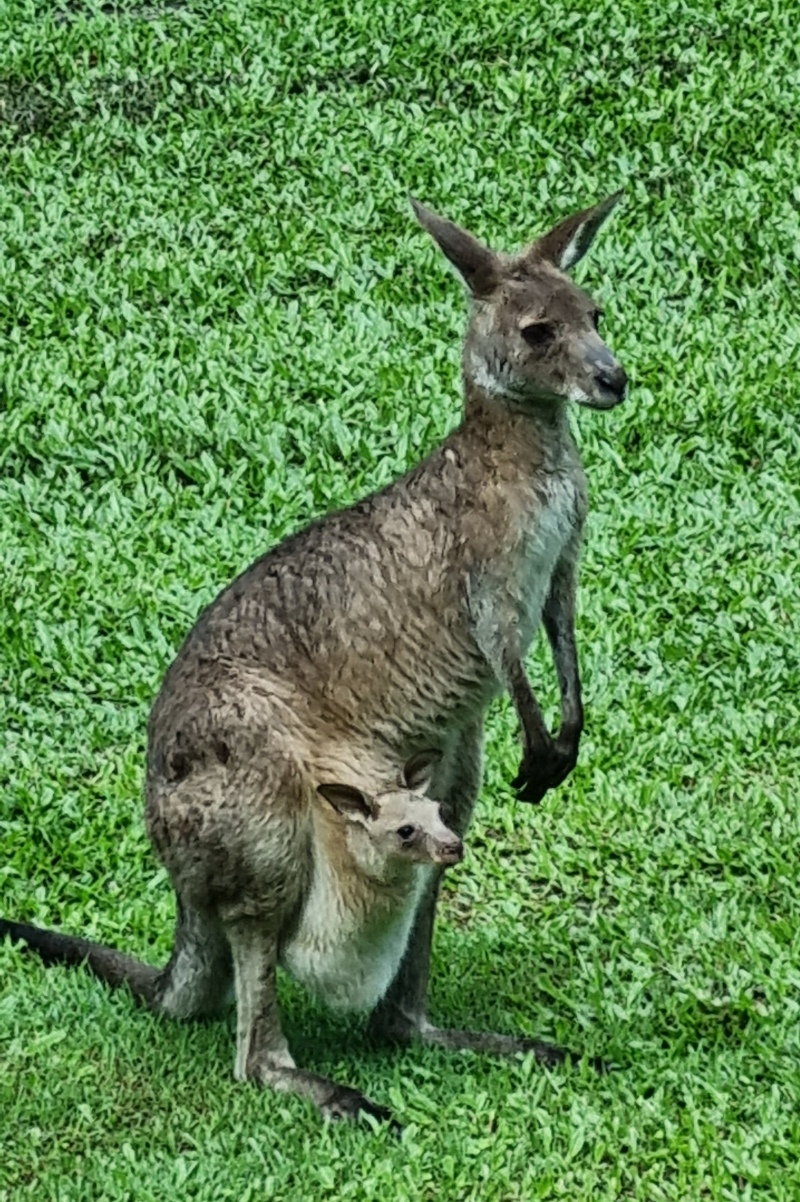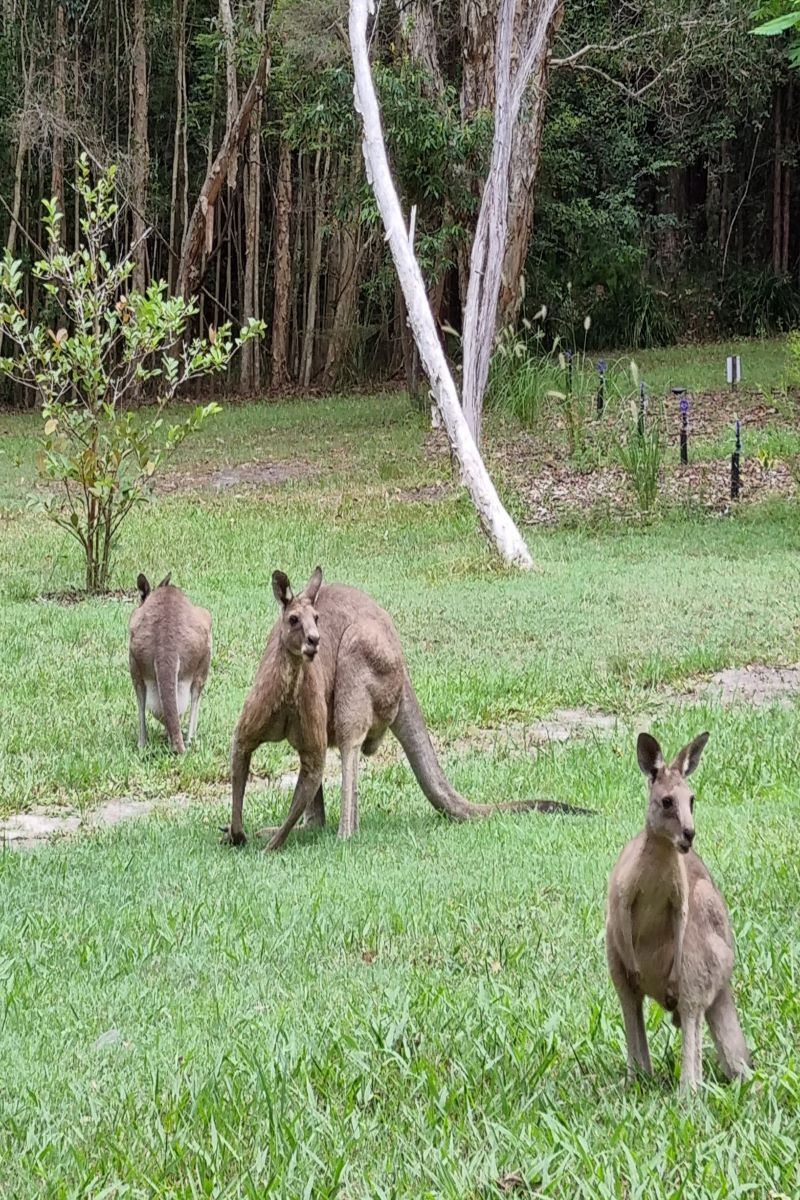Our one hectare property is next to Tewantin National Park. Some regular visitors to our garden are a family of eastern grey kangaroos. It has been interesting and entertaining to watch one of the females raise a number of young over the years. The joey from the previous year usually stays with the mother until it reaches maturity. Kangaroos are the world’s largest marsupials and can have a joey at their feet, one in the pouch and another embryo in a dormant state, all at the same time.
Behaviours we have noticed include clicking noises made by the female to communicate with her joeys and coughing or tail thumping as an alarm signal. They graze mainly on grasses but have also nibbled the leaves of some of our recently planted native shrubs.


Other food sources include ferns, flowers and moss. Kangaroos have not developed to digest human food which can make them sick. Feeding them can also inhibit their natural behavior and result in starvation. Although they can go without water for periods of time, they appreciated drinks from one of our ponds during the recent hot weather. We are careful not to approach or disturb the kangaroos especially when the large male is around.
A research project by the University of the Sunshine Coast (www.usc.edu.au/kangaroo-research) showed that 40% of kangaroo populations had declined on the Sunshine Coast since 2000 and that they had disappeared altogether from 18 locations. This was mainly due to urban development, habitat loss and road collisions.
Rural and semi-urban developed areas with lawns, water sources and shady areas provide ideal living conditions for kangaroos if we are willing to share our garden spaces. We can also help to protect our local kangaroos by driving carefully in areas where they are present, particularly at dusk and dawn, and reporting injured kangaroos to local wildlife organisations.
- Wildlife Noosa Ltd: 0419 046 999.
- Wildlife Care and Rehabilitation Centre, Eumundi RSPCA: (07) 5442 8057
- Australia Zoo Wildlife Hospital: (07) 5436 2097
Written by Vanessa Pressling


